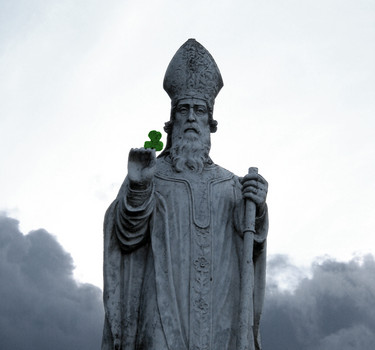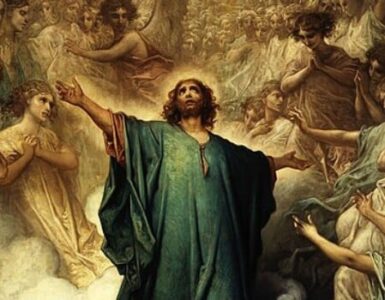The patron saint of Ireland, St. Patrick (389?-461) was born near the west coast of Britain, the son of a Roman civil servant. At age sixteen Patrick was carried off by Irish raiders and sold as a slave in Ireland, where he worked as a shepherd for six years. During this time he became very religious, spending long hours in prayer and meditation.
Patrick finally escaped Ireland by means of a ship sailing to the European continent. He was reunited with his family in Britain, but soon returned to France to study for the priesthood; then he spent fifteen years in a monastery. A dream he had many years earlier convinced Patrick he was called to return to Ireland as a missionary, and in 432 he was consecrated a bishop and sent to preach the gospel to the Irish people. There were some believers in Ireland, but Christianity had made few inroads there, and Patrick had many obstacles to overcome.
Going to the northern and western parts of the island, which Christian missionaries had not yet reached, Patrick — with the protection of local kings — was able to make many converts. His efforts were opposed by pagan druids and even by other Christians, who criticized his methods, but Patrick’s preaching bore great fruit. He ordained clergy, established dioceses, and founded several monasteries, thus preparing for the day when Ireland, virtually alone, would remain true to the faith and send out numerous missionaries to re-Christianize Europe.
In his Confessions, the Apostle to the Irish wrote, “I, Patrick, a sinner, am the most ignorant and of least account among the faithful, despised by many … I owe it to God that so many people should through me be born again to Him.” St. Patrick died on March 17, 461.
Lessons
1. Apparent misfortunes or setbacks can prove to be spiritual opportunities: St. Patrick’s six years of captivity as a youth gave him the chance to develop a rich prayer life.
2. Our efforts to serve God can bear fruit many years later; the Irish missionaries who revitalized the Church during the Dark Ages can be traced back to St. Patrick’s evangelizing activities.
3. Humility — which Patrick expressed in his Confessions — allows God to do great things through us.
From Johnnette Benkovic’s Graceful Living: Meditations to Help You Grow Closer to God Day by Day
“Christ shield me this day: Christ with me, Christ before me, Christ behind me, Christ in me, Christ beneath me, Christ above me, Christ on my right, Christ on my left, Christ when I lie down, Christ when I arise, Christ in the heart of every person who thinks of me, Christ in the eye that sees me, Christ in the ear that hears me.”
—Breastplate of St. Patrick
Johnnette’s Meditation
What “armor” do I wear daily? How convinced am I that I need to wear the armor of God? Consider this in light of these verses: “Put on the whole armor of God, that you may be able to stand against the wiles of the devil. For we are not contending against flesh and blood, but against the principalities, against the powers, against the world rulers of this present darkness, against the spiritual hosts of wickedness in the heavenly places. Therefore take the whole armor of God, that you may be able to withstand in the evil day, and having done all, to stand” (Ephesians 6:11–13).
Other Saints We Remember Today
St. Joseph of Arimathea (1st Century), Patron of Funeral Directors
Blessed John Sarkander (1620), Priest, Martyr
image: Shutterstock














